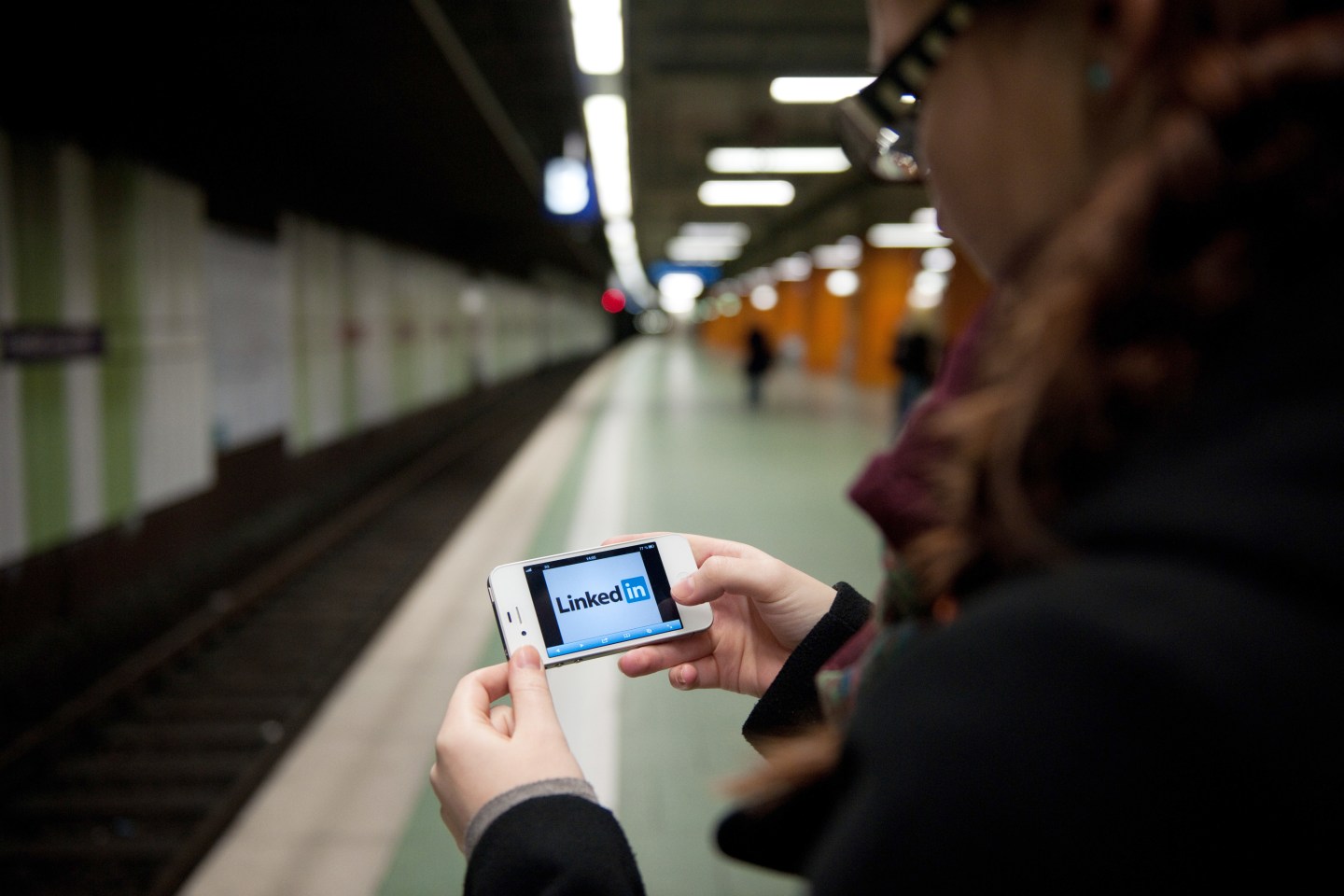Want more business? Then you need LinkedIn. It may not be as huge as Facebook, or as hip as Snapchat, but LinkedIn is the social network where business gets done. Here are a few stats to prove it:
• 80% of B2B leads come from LinkedIn.
• 66% of B2B content marketers say LinkedIn is their most effective social media platform.
While LinkedIn can be effective, it’s also possible to fumble around with it and not get very far. Use these five tips to optimize your time and get top-tier results.
1. Republish your blog posts on LinkedIn.
This is a terrific way to get more exposure, but many small business owners avoid it because they’re concerned about duplicate content. An article from Search Engine Journal has a nice roundup of some major SEOs’ opinions on this issue. Long story short? The consensus is that publishing even the exact version of a post to your LinkedIn Pulse won’t hurt you.
If you’re still worried, publish on your own site first, then wait a week to publish on LinkedIn. And then enjoy far more exposure. One marketing company I spoke with recently says they get three to five times as much exposure from their LinkedIn posts as they do from anything published on their blog.
One more way to get even more results from this: If you think your post is worthy, tweet about it to Tip @LinkedInPulse. That’s a specific feed set up for the LinkedIn Pulse editors. If your post gets picked up, it could mean major exposure for your brand.
2. Want to build your connections? Follow people on Twitter first.
Sending connection invites can be stressful—especially if you don’t actually know the person. One way to warm up the greeting is to follow people on Twitter first. It’s far easier to get someone to follow you back on that platform, and once they’ve done so, you’ve got a common bond.
But that’s just the first step. It also helps if you’re in a LinkedIn Group or two together, and it helps even more if you send a personalized invite. All the invite has to say is: “Hello Fred. We’re following each other on Twitter, and are in a few groups together here on LinkedIn. Thought I’d reach out and see if you wanted to connect.” About 85 percent of the people I contact with that message say yes.
If that doesn’t work, you can still follow the person on LinkedIn. Keep building your relationship by commenting on their posts and sharing their social media updates. Try another connection invite in a month or two.
Once you’ve got those connections, don’t lose track of them. Adding tags to your connections can help. Tags are customizable, and you can use up to 200 of them.
Bonus idea: Tags are a great way to sort potential hires if you’re looking for new employees. According to our WASP 2016 State of Small Business Report, 50 percent of all small business owners say hiring new employees is their number one challenge.
For more on LinkedIn, watch this Fortune video:
3. Endorse your contacts.
You’ve just landed a new contact. You are hoping to build this relationship into something big, but you don’t want to come off as too pushy too fast. So endorse them—for one skill.
This literally takes only a second. Your connection will get a message notifying them you endorsed them, too.
Notice how I suggested you endorse them for only one thing. That leaves room to endorse them for a couple more skills later on. So if you’re going to ask them for a favor—an introduction, perhaps—endorse them for a skill a few days before you make the ask.
Liking and sharing people’s posts and commenting on their LinkedIn Pulse posts can help, too. Also, try to do this even if you don’t need a favor. If you’re connected to someone, hopefully it’s because there’s at least some genuine interest in them or their work.
Bonus tip: You can set a reminder on a connection’s profile to get a notification of when it’s time to do something nice for them.
4. Split-test your headshot.
You already know your LinkedIn headshot should be professional. So no “drink-in-hand party shots” (unless it’s a selfie with Richard Branson). No photos of your pet or your child as your profile shot, either.
But after you’ve got all that covered, how can you be sure your headshot is good enough? Well, there’s an interesting free tool called PhotoFeeler. It lets people rate your photograph on several specific criteria:
• Competency
• Likeability
• Influence
To split-test two different headshots, you should run two tests—one for each headshot. You can do this for free if you’re willing to rate other people’s photos, or you can buy credits to save yourself some time.
5. Set up smarter privacy settings.
A couple of simple tweaks to your LinkedIn privacy settings can make a big difference.
Keep your connections private. Don’t let competitors see who you’re connected to. Change the setting on your privacy page so no one can see your prospects and customers.
Stop promoting your competitors. Know that box titled “People Also Viewed” next to someone’s profile? That’s showing when people look at your profile, and it’s probably showcasing your competitors. Turn it off.
Before you rehaul your LinkedIn profile, turn off automated announcements. This will spare your contacts from having to get 23 announcements about all the profile edits you’re about to make.
Conclusion
LinkedIn is a business power tool and that’s a good thing because it means it’s powerful. But it also means you need to know what you’re doing when you turn it on. These five tips will get you started, but I recommend some continuing education. Social selling—like social media—is evolving all the time.
